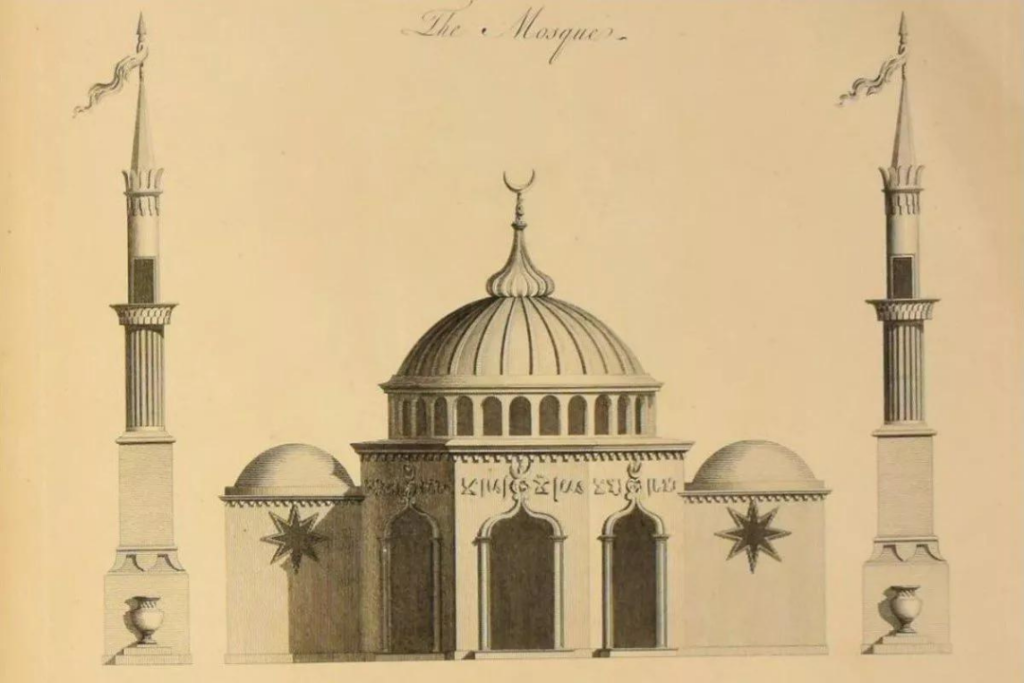In the picturesque setting of Kew Gardens, amidst lush greenery and botanical wonders, once stood a piece of architectural history—a testament to cultural exchange and innovation. The first mosque structure in Britain, erected in 1761, spoke volumes about the multicultural influences shaping British architecture.
Commissioned by Princess Augusta, granddaughter of King George II and sister of King George III, the mosque was the brainchild of the renowned Scottish-Swedish architect, William Chambers. Chambers, known for his landmark creations like Somerset House and the Pagoda, was tasked with designing an ornamental structure that would pay homage to Turkish-Islamic architecture while serving as a symbol of cultural exchange.

Photo: mylondon.news
Constructed as an architectural folly, the mosque at Kew Gardens was not intended for religious worship but rather as a symbolic tribute to the intricate designs and cultural significance of Turkish-Islamic architecture. Despite the absence of a Muslim community to utilize it, the mosque remains a striking example of the multicultural influences that have enriched British architecture.
As we delve deeper into the story of Britain’s first mosque structure, we uncover the architectural ingenuity and cultural fusion that defined its creation. Princess Augusta’s visionary commission and William Chambers’s masterful design reflect a spirit of openness and inclusivity, celebrating diversity and heritage.
Fast forward to 2023, and RTP’s Ramadan Pavilion emerges as a contemporary response to this historic structure. Meticulously crafted with modern architectural elements, the Ramadan Pavilion pays homage to William Chambers’ historic design while embodying a fusion of tradition and innovation.

Photo: Ramadan Pavilion 2023 by Matt Rowe
Drawing inspiration from the intricate designs and cultural significance of the first mosque in Britain, RTP’s Ramadan Pavilion serves as a gathering space for communal reflection, celebration, and cultural exchange during the holy month of Ramadan. Its striking aesthetics and thoughtful design encapsulate the spirit of inclusivity and unity within the community, fostering a sense of connection and belonging for all.

Photo: Ramadan Pavilion 2023 | V&A Friday Lates by Hydar Dewachi
As we reflect on the enduring legacy of Britain’s first mosque structure in Kew Gardens, we recognise its profound impact on British cultural heritage. From its humble beginnings as an ornamental structure to its contemporary reinterpretation in RTP’s Ramadan Pavilion, the story of the first mosque in Britain continues to inspire and enlighten us, reminding us of the rich tapestry of diversity that enriches our society today.
For more insights into our RTP’s Ramadan Pavilion 2023, visit this page. Explore the architectural heritage that defines our past and shapes our future.
This post is part of our Muslim Heritage series, you can read about the remarkable legacies of inspiring Muslim figures and institutions who have etched their impact on history here.

